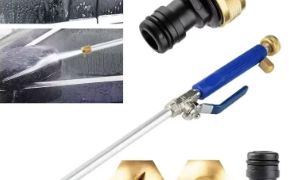Are snow-covered driveways a source of frustration during winter? Discover how to transform icy pathways into hassle-free zones with our comprehensive guide.
From electric to hydronic to above ground systems, we look at each option and how the installation process works. Say goodbye to shoveling snow and hello to effortless snow removal. Dive in, and let’s melt away those winter worries together.
Key Summary
- There are three main types of driveway heating systems: electric, hydronic, and above-ground.
- The first step is assessing the suitability of a heated driveway for your property. Factors to consider include driveway size and layout, climate, driveway material, available energy source and your budget.
- Other steps in the installation process include surface preparation, installation of heating elements, connection to the power source, backfilling, and paving.
- Operating and maintaining your heated driveway correctly is key for maximizing longevity and performance post-installation.
Types of Heated Driveways
There are three main types of radiant heated driveway systems: electric, hydronic and above-ground systems. Each offers different benefits and is powered by various sources.
Electric Heating Systems
These systems consist of heating cables or mats installed beneath the driveway’s surface. When activated, the cables generate heat, melting snow and ice on contact.
Electric systems are usually easier to install and cheaper than hydronic systems but may have higher operating costs.
| Pros | Cons |
|
|
Hydronic Heating Systems
Hydronic systems circulate heated water through tubing buried beneath the driveway. A boiler or other heat source heats the water and pumps through the tubing, transferring heat to the pavement above.
Hydronic systems may cost more upfront, but they can be more energy-efficient and cost-effective in the long run.
| Pros | Cons |
|
|
Above Ground Heated Driveways
Above-ground heated driveway systems are designed to be placed on top of your driveway surface.
They are suitable for both residential and commercial properties and provide a portable solution for snow and ice removal.
| Pros | Cons |
|
|
Electric heating systems are best for homeowners looking for an efficient and reliable system with zone control. Hydronic heating is for those wanting an easy-to-install system. Above ground heating systems are suited for homeowners seeking a convenient and portable solution.
Planning and Preparation
The first step is assessing the suitability of a heated driveway for your property. Here are some factors to consider:
| Driveway Size and Layout | The size and layout of your driveway will influence the type and size of heating system needed.
Larger driveways may benefit from more powerful systems, while irregular layouts may require customized solutions. |
| Climate and Snowfall Patterns | Consider the climate in your region and the frequency and intensity of snowfall.
Areas with heavy snowfall may require more robust heating systems to effectively melt snow and ice. |
| Driveway Material | Different heating systems may be better suited for specific driveway materials.
For example, electric systems work better with various materials like asphalt and concrete while hydronic systems need specific installation considerations. |
| Energy Source | Evaluate the availability and cost of energy sources in your area.
Electric systems are usually powered by standard sources but can also solar power. Hydronic systems offer more flexibility in energy source selection. |
| Budget | Consider your budget for initial installation costs and long-term operational expenses.
Electric systems have lower upfront costs, but hydronic systems offer better energy efficiency and long-term savings. |
Once determined that the heated driveway installation will work, you need to get permits. Local building codes and regulations have specific requirements for the installation of heated driveway systems.
Next, you’ll need to decide on a professional contractor for the installation of your heated driveway. They have the experience, knowledge, and equipment needed to ensure the job is done safely, quickly, and to the highest standards.
Installation Process
You can install a heated driveway on an existing surface by following these eight steps:
1. Assessment of Driveway
- Assess the condition of your driveway. Look for any cracks, damage, or uneven surfaces that may need repairing before installation.
- Measure and note any obstructions that could impact the installation process.
2. Surface Preparation
- Clean the driveway’s surface to remove debris, dirt, and any existing sealant or coatings.
- Repair cracks or damage to ensure that the surface is smooth and level before proceeding.
- If you’re adding asphalt to existing driveways to improve durability or fix surface imperfections, this is the time to do so.
3. Insulation Installment
- Fit insulation precisely to ensure full coverage of the driveway.
4. Installation of Heating Elements
- Follow the manufacturer’s instructions for laying out and installing the heating elements. This will vary depending on the type of heating system chosen.
- For electric systems, this involves embedding heating cables or mats into the driveway surface. Ensure correct spacing and coverage for effective heating.
- Hydronic systems may require cutting channels or trenches in the driveway surface to accommodate the tubing. Secure the tubing in place and fill the channels with a suitable material to protect and insulate the tubing.
5. Connection to Power Source or Boiler
- Connect heating elements to the power source or boiler according to the manufacturer’s specifications.
- Ensure good electrical connections for electric systems and consider consulting a qualified electrician for installation. They will ensure safety and compliance with local regulations.
- Hydronic systems require connection to a boiler or heat source, along with appropriate piping and fittings. Secure and seal all connections to prevent leaks.
6. Testing and Troubleshooting
- Activate the system and monitor for any issues such as uneven heating or malfunctions.
- Address any issues and make necessary adjustments or repairs to ensure optimal performance.
7. Backfilling
- Backfill with materials that are compatible with the heating system.
8. Paving
- Choose driveway materials that can transfer heat like concrete or asphalt.
Operating and Maintenance
Operating and maintaining your heated driveway correctly is key for maximizing longevity and performance post-installation.
Instructions for Operating the Heated Driveway System
- Activation: Familiarize yourself with the system’s controls and activation methods. This may involve a manual switch, timer, or automated sensors that detect snow and ice.
- Timing: Set the system to activate before snow starts or when icy conditions are expected. This allows the heating elements to melt snow and prevent ice buildup.
- Monitoring: Regularly monitor the system during operation to ensure that it is working correctly. Pay attention to any odd sounds or performance changes that may indicate a problem.
How Much Electricity Does It Take to Heat a Driveway?
On average, electric heated driveways can consume between 50 to 150 watts per square foot during operation.
However, modern systems are designed with energy efficiency in mind. They use sensors and timers to minimize energy usage while still effectively melting snow and ice.
The amount of electricity used depends on factors like the size of the driveway, the heating elements’ wattage, and the duration of operation.
Here are some tips for optimizing energy efficiency:
| Zone Control | Adjust the heating settings to target areas of the driveway that have the most snow and ice buildup. |
| Timing Settings | Adjust the timing settings to align with weather forecasts and anticipated snowfall patterns. |
| Insulation | Insulate the driveway surface well. This will prevent heat loss and boost the system’s efficiency.
Insulation boards or reflective barriers can be installed beneath the heating elements to keep heat and cut energy use. |
Alternative Energy Sources
Consider innovative alternatives like a solar heated driveway to use energy from the sun. Solar energy is a renewable power source and plays a key role in reducing greenhouse gas emissions and fighting climate change.
Solar panels installed on or near the driveway surface convert solar energy into electricity. They power the heating elements and reduce the need for grid electricity.
Routine Maintenance Tasks
- Clearing Debris: Remove leaves, dirt, and debris from the driveway to prevent blockage of the heating elements and keep them working.
- Inspecting Connections: Inspect electrical connections often. Look for wear, damage, or corrosion on them and on the boiler’s parts and tubing. Tighten loose connections and replace any damaged parts as needed to prevent system malfunctions.
- Testing Sensors: Test sensors and controls often. Replace batteries and clean sensor surfaces for accurate detection of snow and ice.
Troubleshooting Common Issues
- Uneven Heating: If certain areas of the driveway heat or melt snow unevenly, look for obstructions or damage to the heating elements. Adjust the placement or spacing of the elements as needed to get more even coverage.
- Power Failures: If the power fails, check that the system is connected to backup power or generator if available. Clear any snow or debris from the power source for uninterrupted operation.
- Leaks or Malfunctions: Contact a technician if you notice leaks in hydronic systems or malfunctions in electric systems. Quickly addressing these issues can prevent more damage and ensure your heated driveway keeps working.
Cost and Return on Investment
Breakdown of Initial Cost
The cost to install a heated driveway can vary depending on factors such as the type of system, the size of your driveway, and specific installation requirements.
Here’s the average cost per square foot:
| Electric Coil | $12 to $21 per square foot |
| Hydronic | $14 to $24 per square foot |
| Electric Mat | $15 to $22 per square foot |
These costs include materials, labor, and installation fees.
Electric systems are generally cheaper upfront compared to hydronic systems. However, you should consider long-term energy and maintenance costs when evaluating the overall investment.
Comparison of Heating Costs with Traditional Snow Removal Methods
The heating costs of a heated driveway are lower than traditional snow removal methods such as plowing, shoveling, or using ice melt chemicals.
While the initial investment may seem high, heated driveways save time, effort, and resources required for manual snow removal.
Traditional snow removal methods have recurring costs for labor, equipment rental, and buying deicing chemicals which add up over time.
In contrast, a heated driveway operates automatically, reducing the need for manual intervention and reliance on external services.
Estimating Return on Investment (ROI) Over Time
Calculating the ROI of a heated driveway involves considering the initial cost and the long-term savings from reduced snow removal costs, increased property value, and enhanced convenience.
The ROI may vary by individual circumstances like climate and usage patterns.
Factors that contribute to the ROI of a heated driveway include:
- Energy Efficiency: Electric systems with zone control and timers can optimize energy use and cut costs over time.
- Maintenance Savings: Heated driveways have fewer ongoing expenses compared to traditional snow removal methods.
- Property Value: The added convenience and safety of a heated driveway can raise your property’s value.
Frequently Asked Questions
What Is A Heated Driveway?
A heated driveway is a system designed to prevent snow and ice buildup on your driveway. It does this by using heating elements embedded beneath the surface. These elements radiate warmth and melt away snow and ice upon contact.
What Is The Best Way To Heat A Driveway?
The best way to heat a driveway depends on various factors. These include the size of the driveway, budget, and specific needs. In our comprehensive guide, we discuss three main ways: electric, hydronic, and above-ground systems.
How Reliable Are Heated Driveways?
Heated driveways are very reliable and can provide years of trouble-free operation when installed and maintained correctly.
But, like any other mechanical system, it may need occasional maintenance to work well. It’s important to choose a reputable contractor with experience in installing heated driveways to reduce the risk of issues later.
Do Heated Driveways Really Work?
The short answer: yes, heated driveways do work. They effectively melt snow and ice, providing a clear and safe surface for vehicles and pedestrians.
How Much Does It Cost to Install Heated Driveways?
The cost of installing a heated driveway can vary depending on factors like the driveway’s size, the heating system chosen, and any added features or customization.
On average, homeowners can expect to invest between $12 to $24 per square foot for installation. This price includes materials, labor, and other associated costs. You should get quotes from reputable contractors to get a more accurate estimate tailored to your specific needs.
Are Heated Driveways Environmentally Friendly?
Heated driveways are environmentally friendly especially when compared to traditional snow removal methods. While they do consume electricity or other energy sources during operation, modern heated driveway systems are designed to be energy efficient.
Additionally, some homeowners choose renewable energy sources like solar power to further reduce their environmental impact.
Conclusion
Heated driveways are a reliable solution to snow and ice buildup, making winter maintenance a thing of the past. Homeowners can find the perfect fit for their needs and budget with versatile heating options like electric, hydronic and above-ground systems.
Correct installation and maintenance of heated driveways provide years of dependable performance while enhancing safety and convenience. The initial investment may be significant but long-term savings and environmental benefits make it a worthwhile investment.




































